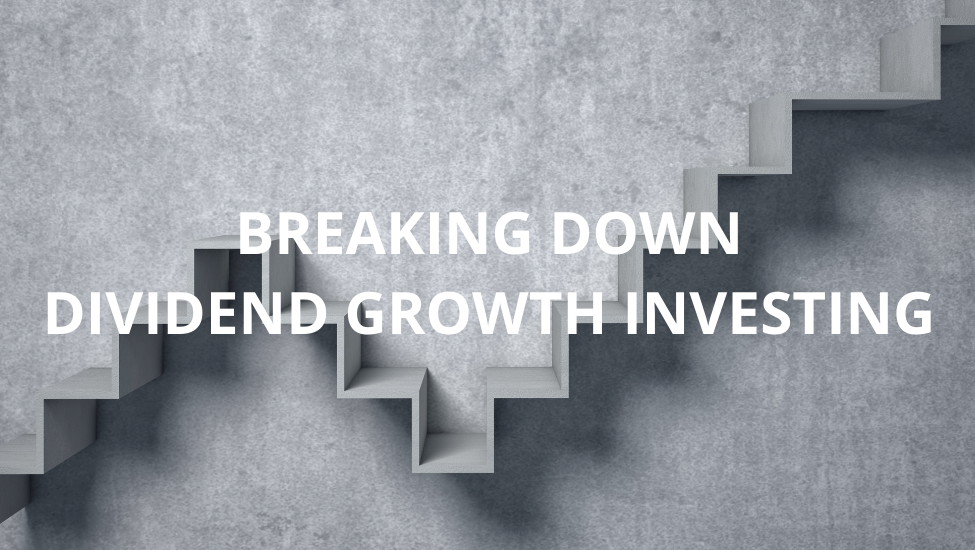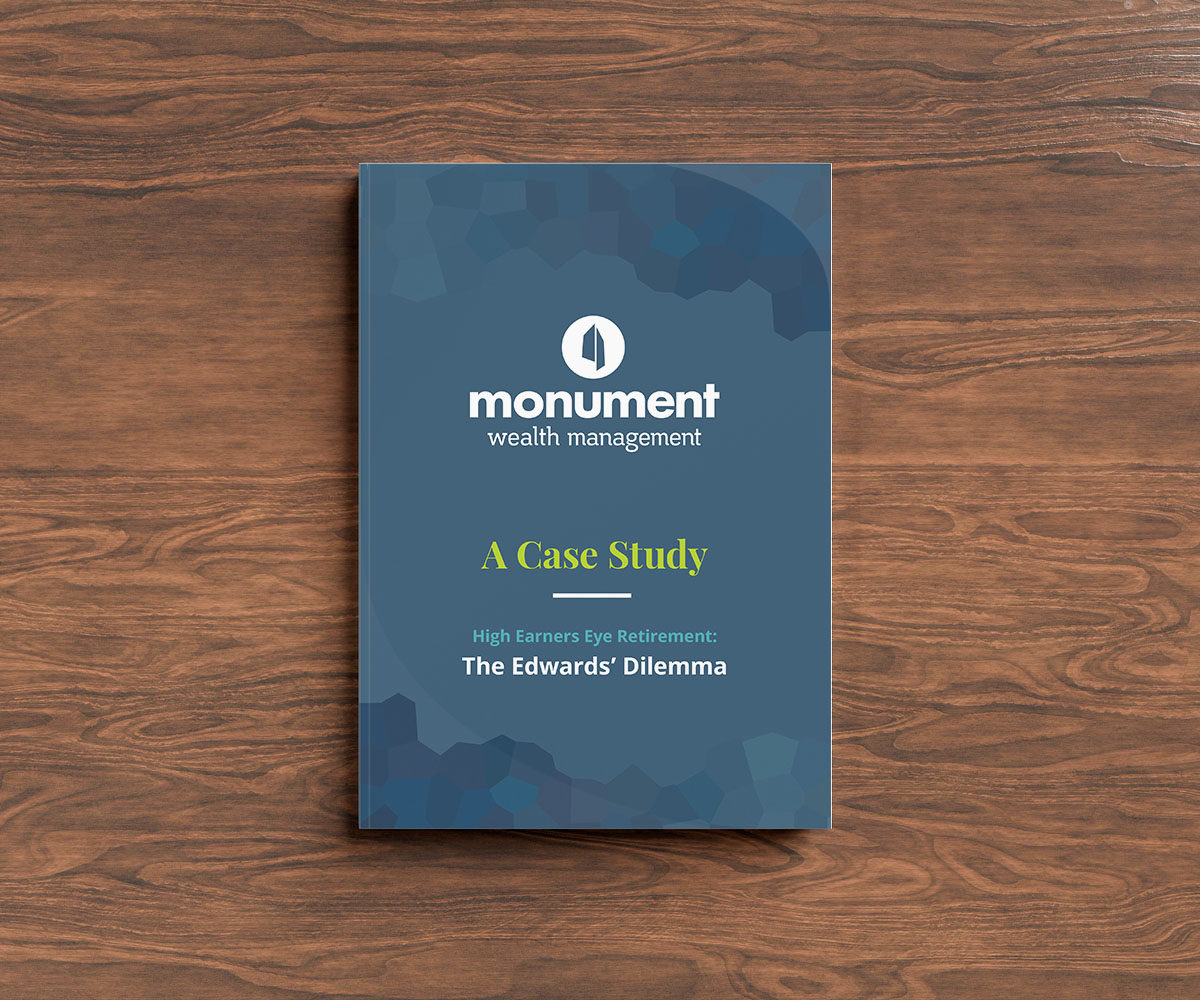Monument Wealth Management Articles
4 Dividend Growth Investing Truths That Get Overlooked

Share on your favorite platform, or by email
Dividend growth companies are attractive to investors because they, by definition, get a larger payment every year. And that could mean huge passive income potential, right Unfortunately, it’s not that simple. Dividend growth investing can work for some investors, but not all dividend growth stocks are created equal. Here are some things to be aware of.
1. Don’t be lured by just a high yield–share price growth matters.
Many of the best dividend growth stocks don’t have high yields. Let that sink in for a moment.
Consider this: when a company pays out a dividend, that’s not free money. On the contrary, it’s less money that goes back into the company which can slow growth down.
In fact, high yield could be a sign that there isn’t much growth to be had at all. Management, for example, might not believe there is an upside to putting funds back in the company, so they instead send extra money to shareholders.
Relatedly, yield can actually hide negative growth. Yield, after all, is the dividend per share divided by the stock price.
For example: say Stock A is worth $20 per share and pays an annual dividend per share of $2. Next year, the price decreases to $15, but it maintains its $2 annual dividend per share. Stock A’s dividend yield jumped from 10% to 13.3%. Yet, the company became less valuable (and so did your investment).
Rather than laser-focusing on the lure of yields, take a step back and consider if the share price displays any promise of growth. Whether it does (or doesn’t), this holistic view can help you decide more strategically on how to approach your dividend growth options.
2. Many of the best dividend growth opportunities don’t have high yields.
Past data shows that low yields tend to beat out high yields in terms of dividend growth. Companies like Coca-Cola and 3M have consistently raised their dividends every year for over half a century. In this respect, the low-yield tortoise can beat the high-yield hare if that aligns with your investment goals.
For example, if you’re an investor only looking at high yield dividends, AT&T offers a 7.3% yield. However, they’ve struggled over the last 5 years, with their investors losing 35% that could have been invested elsewhere.
On the flip side, Walmart offers a 1.5% yield (which is on the low side) but over the last 5 years, its total return has been 95%. Even though it’s a significantly smaller dividend when compared to AT&T, it’s difficult to argue that a nearly 100% return rate wouldn’t be a good investment despite a low yield.
There’s no doubt that it can be a safer bet to go with companies that have a long track record of increasing their dividends. These blue chip companies have made it through all types of market conditions and economic circumstances, but still boosted the dividend without fail. Over the long term, there’s a higher chance of earning a larger total amount in dividends.
3. Look for durability–a long track of increases is more important than either a dividend initiation or a large, one-time increase.
Durability takes precedence over immediacy. A longer track record of consistent dividends and dividend growth offers more proof that the dividend is likely (not guaranteed) to continue to increase in the future.
This is most obvious when it comes to stocks that are trying to enter the dividend world. They have no track record of operating successfully while paying dividends, so you don’t have any dividend data to look at. They might end up being a great dividend growth stock—or they could cut their dividend next year.
Now, there’s another thing to watch out for: large, one-time increases.
A company may do this to lure in more investors, or they might simply not see much growth potential should they reinvest this larger-than-usual amount. Either way, a company can only consistently raise dividends if it increases its earnings! So buyers beware.
Companies that have a track record of consistently raising their dividend over the long term have likely weathered many financial storms without cutting their dividend and this could be a potential indicator of a great investment.
4. The cash flow from a solid dividend growth company should meet or exceed inflation over time.
Many think about inflation only when their cash is sitting in a bank account. But when it comes to dividend investing, you need to ensure your dividend growth cash flows are beating inflation as well.
To illustrate, say you earn $100 in dividends this year. Next year, consumer prices go up by 2%. Items that used to cost $100 are now $102. If your dividend holdings don’t increase their dividend to pay you at least $102—ideally more—then you’re losing money.
So, you might think you’ve found a solid dividend growth company to add to your portfolio, but before you consider doing so, make sure their dividend payment has consistently beaten inflation.
Is Dividend Growth Investing Right For You?
Dividend growth investing can be a good strategy in the right context, but the right strategy is more nuanced than one might be led to believe. Want to know, for sure, what type of investing is the smart play for you? That’s why we’re here. Monument Wealth Management is a boutique investment management firm. We take pride in cutting the bullsh*t and providing unfiltered advice.
Our Team collaborates with you to co-create your very own Private Wealth Design–taking into consideration your big picture and showing you how to meet your goals using what we know today, while adapting to the unforeseen changes of tomorrow. . Whether you need help understanding dividend growth investing, want to make sure your current portfolio is set to support your life goals, or you’re ready to plan for the future, we’re here for it.

Case Study: High Earners Eye Retirement
The Monument Wealth Management Team helps successful professionals envision their ideal retirement and create a plan to get there.
IMPORTANT DISCLOSURE INFORMATION
Please remember that past performance is no guarantee of future results. Different types of investments involve varying degrees of risk, and there can be no assurance that the future performance of any specific investment, investment strategy, or product (including the investments and/or investment strategies recommended or undertaken by Monument Capital Management, LLC [“Monument”]), or any non-investment related content, made reference to directly or indirectly in this blog will be profitable, equal any corresponding indicated historical performance level(s), be suitable for your portfolio or individual situation, or prove successful. Due to various factors, including changing market conditions and/or applicable laws, the content may no longer be reflective of current opinions or positions. Moreover, you should not assume that any discussion or information contained in this blog serves as the receipt of, or as a substitute for, personalized investment advice from Monument. To the extent that a reader has any questions regarding the applicability of any specific issue discussed above to his/her individual situation, he/she is encouraged to consult with the professional advisor of his/her choosing. No amount of prior experience or success should be construed that a certain level of results or satisfaction will be achieved if Monument is engaged, or continues to be engaged, to provide investment advisory services. Monument is neither a law firm nor a certified public accounting firm and no portion of the blog content should be construed as legal or accounting advice.
A copy of Monument’s current written disclosure Brochure discussing our advisory services and fees is available for review upon request or at www.monumentwealthmanagement.com/disclosures. Please Note: Monument does not make any representations or warranties as to the accuracy, timeliness, suitability, completeness, or relevance of any information prepared by any unaffiliated third party, whether linked to Monument’s website or blog or incorporated herein, and takes no responsibility for any such content. All such information is provided solely for convenience purposes only and all users thereof should be guided accordingly.
Historical performance results for investment indices, benchmarks, and/or categories have been provided for general informational/comparison purposes only, and generally do not reflect the deduction of transaction and/or custodial charges, the deduction of an investment management fee, nor the impact of taxes, the incurrence of which would have the effect of decreasing historical performance results. It should not be assumed that your Monument account holdings correspond directly to any comparative indices or categories. Please Also Note: (1) performance results do not reflect the impact of taxes; (2) comparative benchmarks/indices may be more or less volatile than your Monument accounts; and, (3) a description of each comparative benchmark/index is available upon request.
Please Remember: If you are a Monument client, please contact Monument, in writing, if there are any changes in your personal/financial situation or investment objectives for the purpose of reviewing/evaluating/revising our previous recommendations and/or services, or if you would like to impose, add, or to modify any reasonable restrictions to our investment advisory services. Unless, and until, you notify us, in writing, to the contrary, we shall continue to provide services as we do currently. Please Also Remember to advise us if you have not been receiving account statements (at least quarterly) from the account custodian.